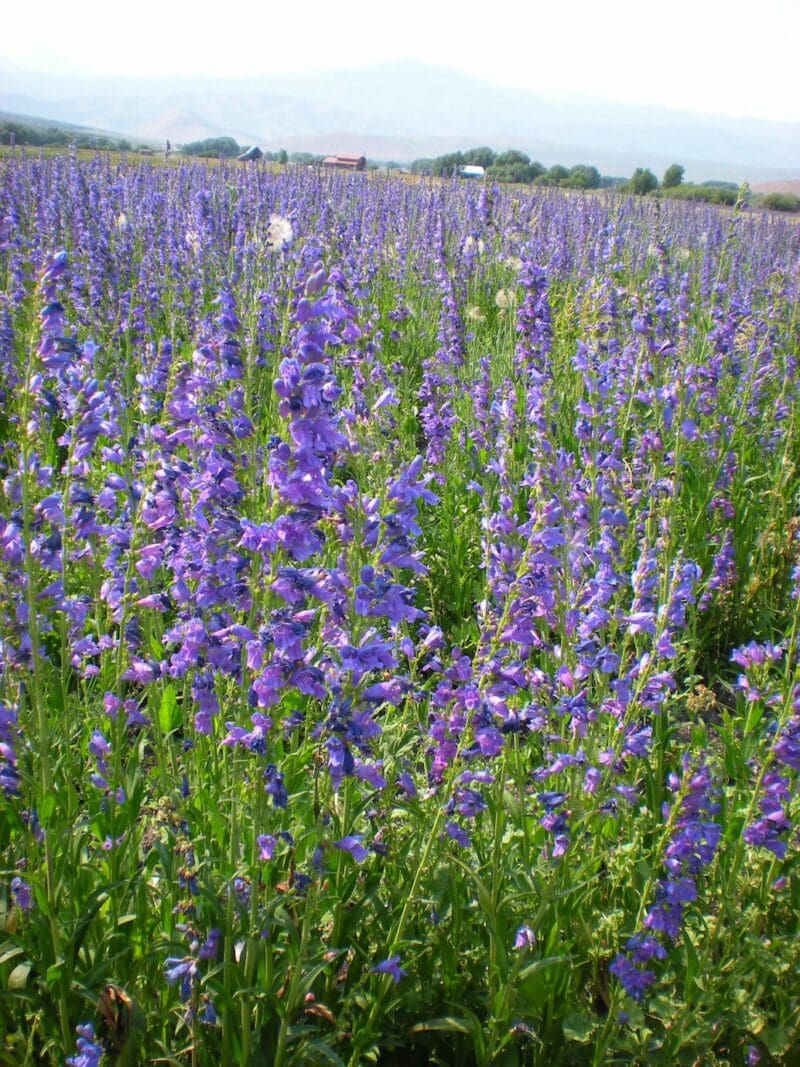Rocky Mountain Penstemon
- Scientific name: Pentemon strictus
- Semi-evergreen, native, perennial forb with fibrous roots
- Attractive for ornamental and landscape planting
- Frequently used for erosion control and reclamation
- Common ingredient in our wildflower mixes
- Flowers in the second growing season
Out of stock
Min. to Max. Annual Precipitation
48in.
Average Max. Height
A semi-evergreen, native, perennial forb with fibrous roots. Native to the western United States from southern Wyoming south into northern New Mexico. Found with sagebrush in pinyon-juniper woodland, oak scrub and in openings of ponderosa pine and spruce-aspen forests. Adapted to well drained, rocky and sandy loam soils from 6,000-10,500 feet elevation. Frequently used in seed mixes for erosion control and reclamation. A common ingredient in our wildflower mixes, erosion control and reclamation seed mixes.
Rocky Mountain Penstemon (Pentemon strictus) is a semi-evergreen, native, perennial forb with fibrous roots. It is native to the western United States from southern Wyoming south into northern New Mexico, and the eastern portions of Utah and Arizona. It is found with sagebrush in pinyon-juniper woodland, oak scrub and in openings of ponderosa pine and spruce-aspen forests. It is best adapted to well drained, rocky and sandy loam soils that are weakly acidic to alkaline and in areas with 15-20 inches annual precipitation and 6,000-10,500 feet elevation.
The beautiful flowers and evergreen basal leaves of Rocky Mountain penstemon make it attractive for ornamental and landscape planting. It is frequently used in seed mixes for erosion control and reclamation. It is a common ingredient in our wildflower mixes, erosion control and reclamation seed mixes.
Rocky Mountain (Penstemon strictus) is used by wildlife and is rated as fair forage for cattle and fair to good forage for sheep. It provides diversity in the plant communities where it is found. Rocky Mountain penstemon is used by bumblebees to gather nectar and is also visited by various other bees and wasps. Hummingbirds only visit Rocky Mountain penstemon occasionally.
To establish plant seed in the fall from 1/8 to no more than 1⁄4 inch depth into a firm, weed-free seedbed. Good seed to soil contact is important for germination and establishment. Mulching, irrigation and weed control benefit stand establishment. Some seed may not germinate until the second growing season. Plants begin growth early in the spring and flower blossoms appear in the late spring and early summer. Flowering should not be expected until the second growing season.
***Click on the “Quick Plant Facts” tab above for more information.
Rocky Mountain Penstemon NRCS Plant Guide
Rocky Mountain Penstemon NRCS Plant Guide
PDF version of NRCS Plant Guide & Fact Sheet
Prepared By: Daniel G. Ogle USDA, NRCS, Idaho State Office, Boise, Idaho.
J. Scott Peterson USDA, NRCS, National Plant Data Center, Baton Rouge, Louisiana
Species Coordinator: Daniel G. Ogle USDA, NRCS, Idaho State Office, Boise, Idaho.
Helpful Links
Additional information about this product can be found on the academic websites linked below.
Synonyms
Many plants have more than one common and scientific name. We've listed a few of them below.
- Rocky Mountain Penstemon
- Penstemon strictus
- Beardtongue
Who is Great Basin Seed?
Great Basin Seed is a seed company that specializes in seed sales and consultation for home, ranch, farm, range and reclamation. We have been a leader in the seed industry since 1974.
Our History
We've been in the seed business since 1974.
What We Offer
We offer seed for home, farm, ranch, range and reclamation projects.
Meet the Gang
We have the best employees in the world! We are proud of the work they do, and trust them to serve you!
Right: Company founder Lloyd and his wife Paula Stevens in a wildflower seed production field circa 1977
Quick Plant Facts
| Common Name: | Beardtongue |
|---|---|
| Scientific Name: | |
| Lifespan: | |
| Origin: | |
| Plant Type: | |
| pH Tolerance: | |
| Seed Count | 478000 |
| Growth Height: | |
| Planting Rate: | |
| Min. Precipitation: | |
| Best Time to Sow: | |
| Max Sowing Depth: | |
| Growth Season: | |
| Sun & Shade Tolerance: | Full sun, Partial shade |
| Elevation of Occurance: | |
| Plant PDF File | pest.pdf |
| Zone Map | comingsoon.gif |
| Seeds per Pound: | |
| Hardiness Zones: |










